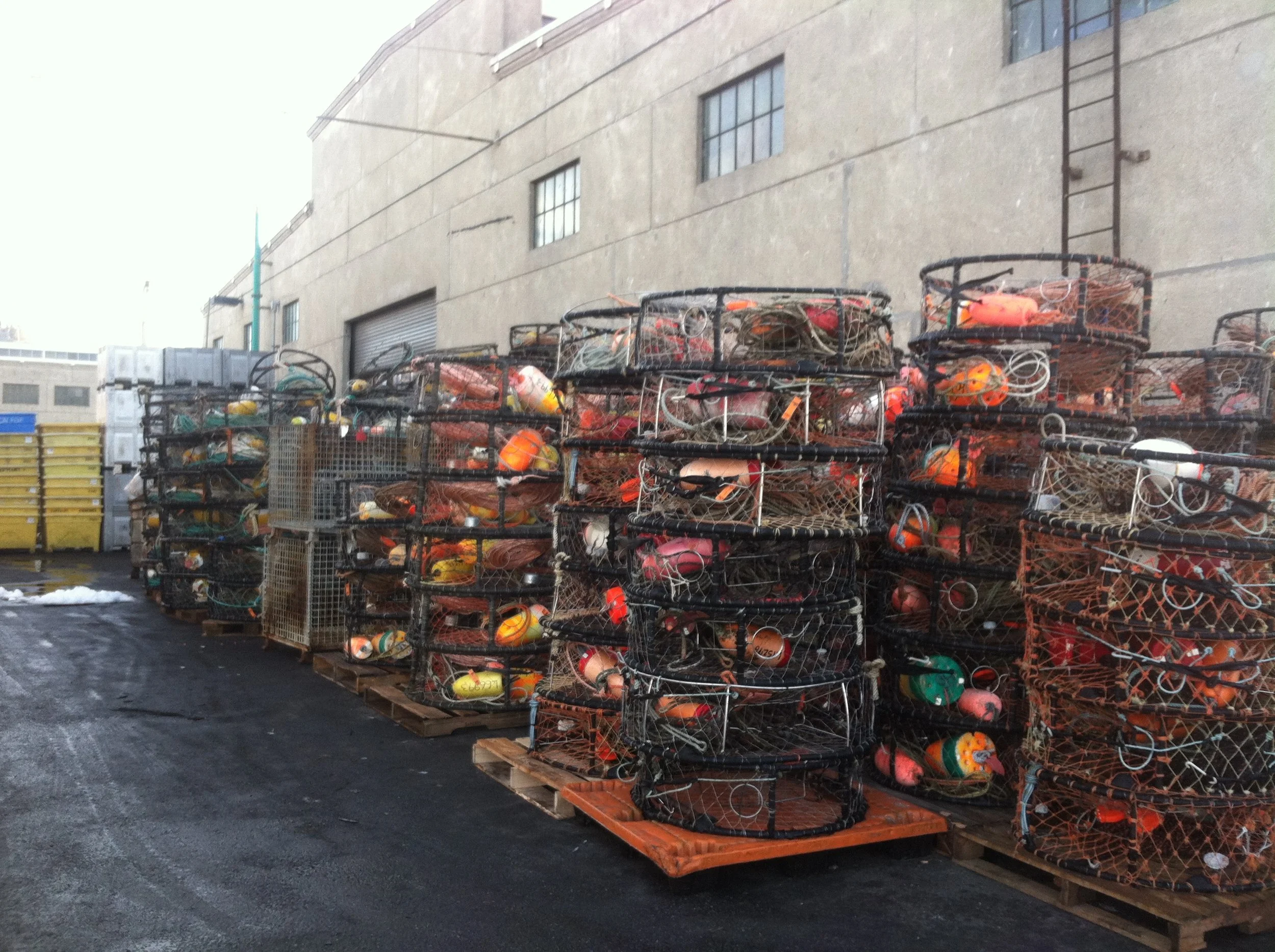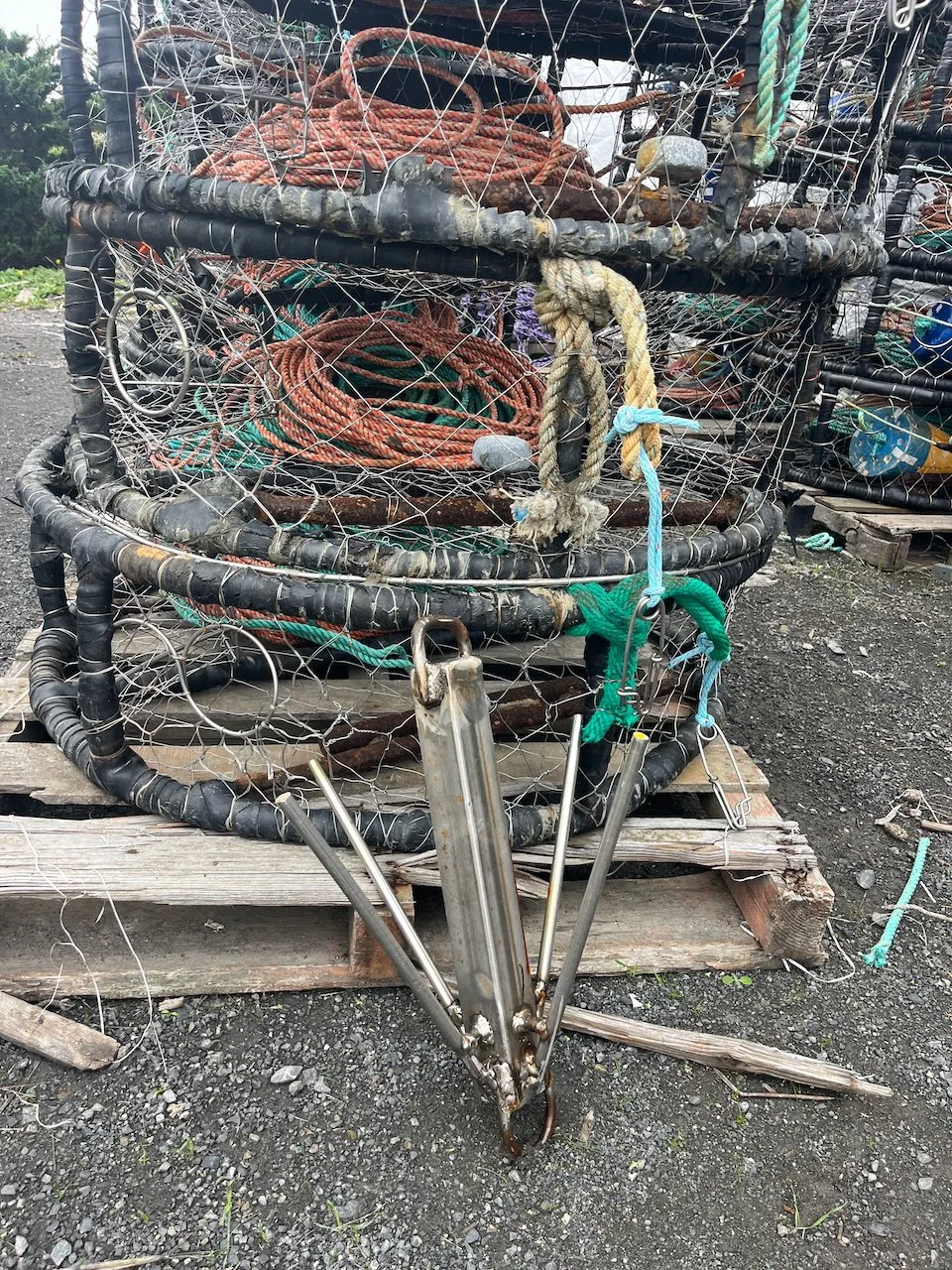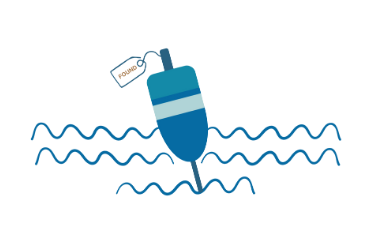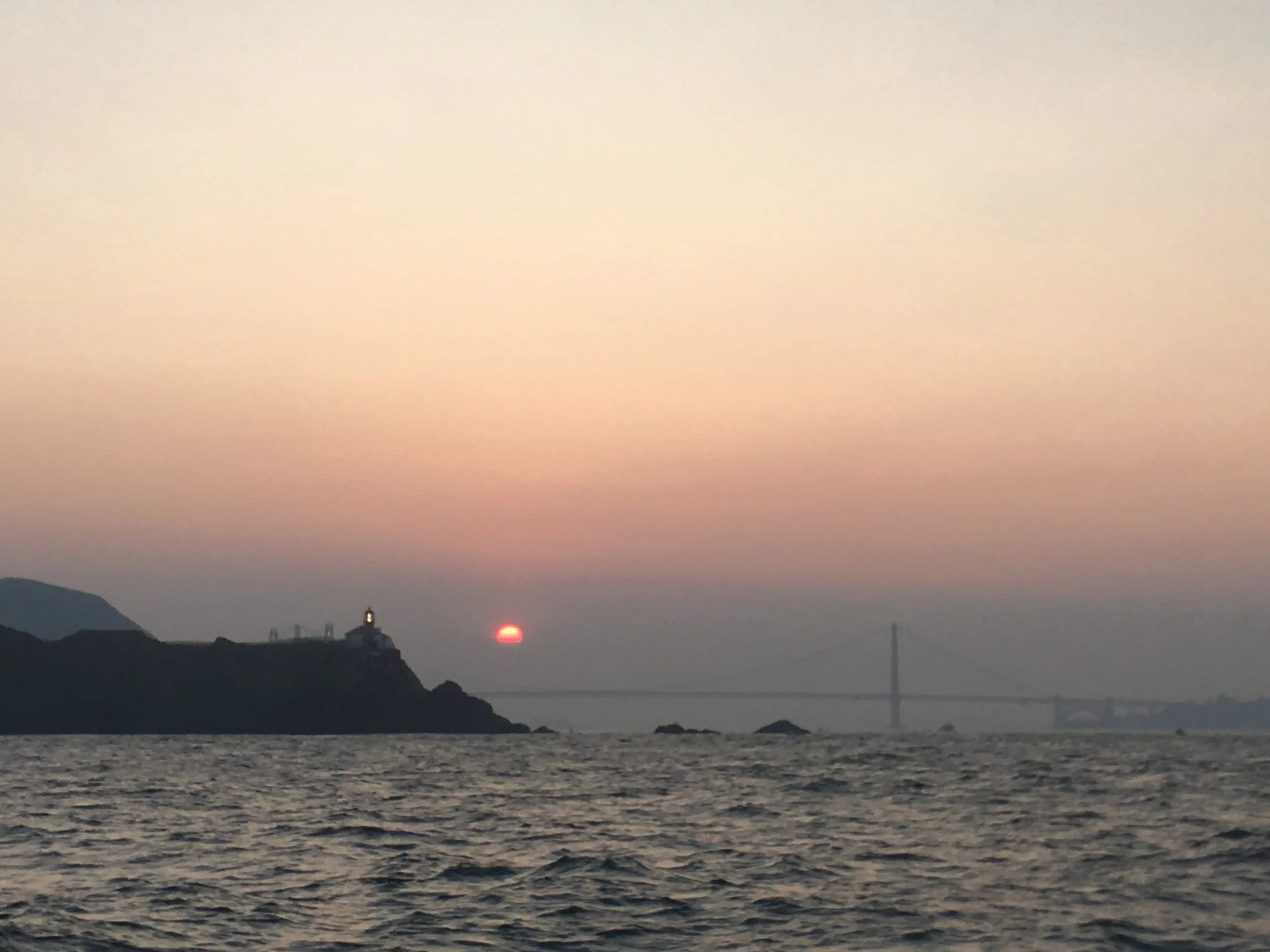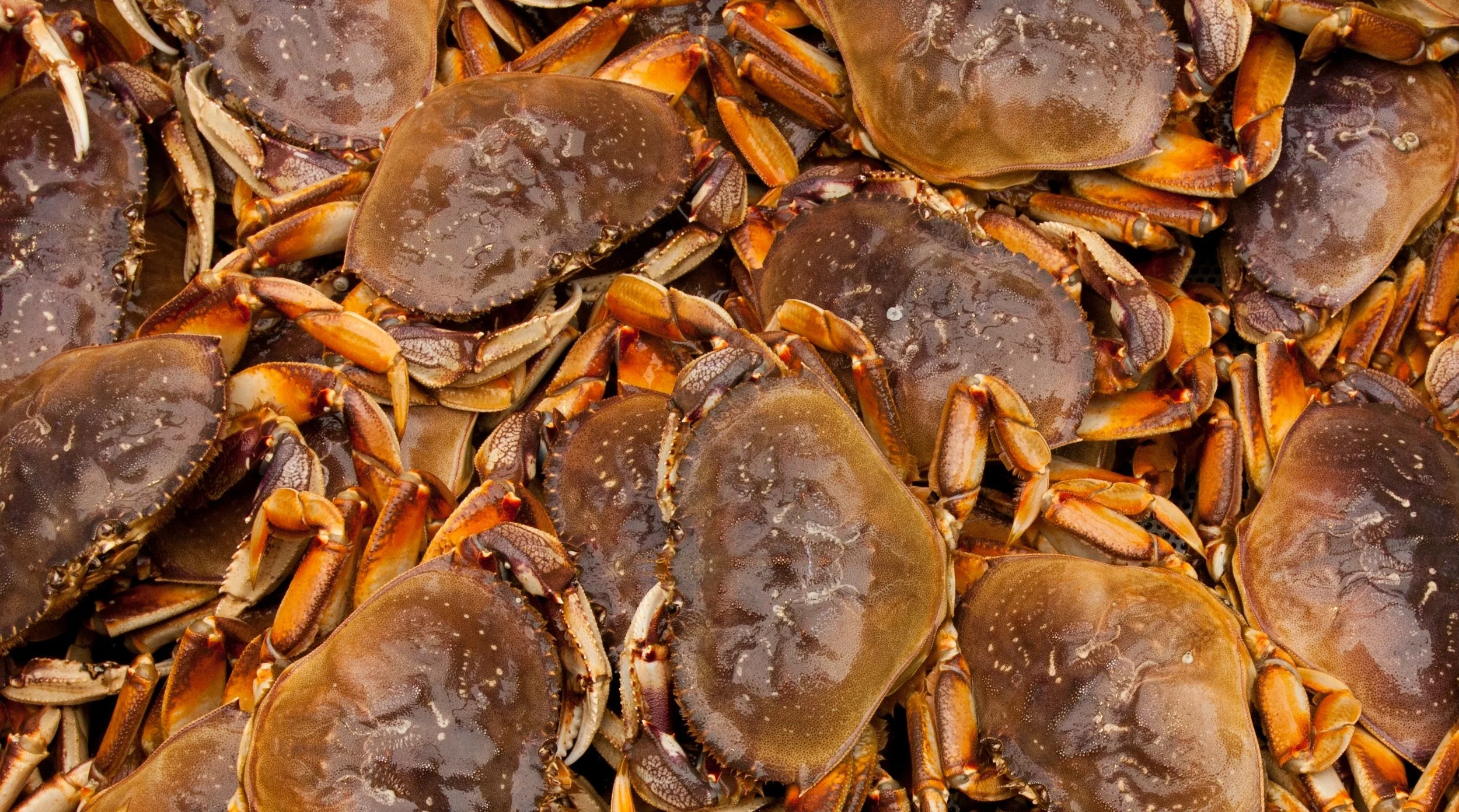
California Dungeness Crab
Dungeness crab season management involves several moving parts. These are sometimes referred to as “the four horsemen of the crab apocalypse” to help stay sane while dealing with so many things beyond human control year after year. Each season depends on domoic acid testing, crab quality testing in the Northern Management Area, risk assessment data under RAMP, and the usual variables that make fishing unpredictable, including weather, fishing conditions, and market demand.
California’s commercial Dungeness crab fishery is regulated under state law and managed by the California Department of Fish and Wildlife, with the Dungeness Crab Task Force advising the Department, the Fish and Game Commission, and the Legislature. Within this framework, the Risk Assessment and Mitigation Program (RAMP) guides how whale entanglement risk is evaluated and how the fishery is adjusted when needed. Through scheduled risk assessments and informed by input from the Dungeness Crab Gear Working Group, the Director of CDFW has the authority to determine season opening and closing dates and to apply management actions to mitigate risk. It’s a complicated system, but even with all four horsemen in play, PCFFA works to be a reliable source for accurate, current information and an advocate for better seasons ahead.
our work in the crab fishery
advocacy
PCFFA represents California’s commercial crab fleet in the forums where management decisions actually get made. Our board members sit on the Dungeness Crab Task Force (DCTF) and its Executive Committee, and we hold both port seats and a dedicated PCFFA seat on the Dungeness Crab Gear Working Group. We actively participated in the RAMP 2.0 process and are committed to weighing in on every proposal that affects the fishery. Our job is to make sure the voices of working fishermen are in the room and on record when policy is written.
current priorities and outcomes
Compile information for the current season and make it accessible to the fleet through Dungeness Crab Season Information Flyers.
Continue to push for a review of RAMP management triggers based on best available science, in keeping with our Dungeness Crab Position Statement.
Meet with legislators to highlight DCTF recommendations and build support for related legislation expected in early 2026.
Participate in quarterly “2×2” meetings with CDFW and Senate President pro Tempore Mike McGuire.
Successfully lobbied for clarity in RAMP 2.0, reducing unnecessary burdens tied to gear-marking requirements. (Final package adopted October 2025.)
Testimony by Lisa Damrosch and Dick Ogg on Dungeness Crab at the Joint Fisheries and Aquaculture Committee’s 50th Annual Zeke Grader Fisheries Forum October 2025.

practical solutions
longline grappling
Over two years, PCFFA navigated CDFW’s Experimental Fishing Permit process and successfully tested traditional longline gear with a grapple in spring 2025. The trials showed that simple, proven tools can still solve hard problems, offering a practical, affordable way to fish when whales return in the spring without costly new systems. PCFFA is now working through the state’s gear authorization process with hopes of receiving approval in time for the entire fleet to have an opportunity to access the spring fishery in 2026 if the season closes early to traditional gear after April 1. This work provides access and opportunity to ensure the spring fishery is accessible to all boats.
Note: Alternative gear, once authorized, may be used only after April 1 if the Director determines traditional gear is restricted due to increased entanglement risk for returning whales. By that point, about ninety-four percent of the crab have already been harvested under heavier weather, dense gear, and intense fishing pressure that make grappling impractical earlier in the season.
line marking
PCFFA worked with CDFW to help distribute the first 650 coils of marked floating line, coordinating communication and logistics across ports. That firsthand experience guided PCFFA’s consultation with CDFW on the second, larger distribution completed in September 2025, making the rollout smoother and more consistent statewide. We’re also pressing for funding to support another round of line distribution before the 2028 compliance deadline, to reduce the fleet’s burden for entanglements in unidentified gear and keep every permit holder equipped to stay compliant.
data & risk tools
CDFW has expressed interest in modernizing data collection and reporting. PCFFA has convened and represented fishermen in meetings with the CDFW data team and technology developers to ensure that any future systems accurately reflect real fishing practices and workloads. We’ve also participated in several meetings and workshops with other stakeholders and insurance industry representatives to explore whether insurance tools could help stabilize businesses when seasons fail. The first workshop, hosted by the Ocean Science Trust, initiated the conversation; follow-up meetings are now focused on identifying practical options that can work within the realities of commercial fishing.
fishermen’s lost gear recovery network
Lost and abandoned gear recovery has always been part of the Dungeness crab fishery. PCFFA coordinates the Fishermen’s Gear Recovery Network, connecting local port programs, training fishermen, and managing tools and data to support this long-standing work. The program is fleet-run and focused on real-world cleanup and prevention in California’s working ports
crab season resources and information
-
Domoic Acid Testing
Domoic acid (DA) is a naturally occurring toxin that can sometimes appear in crab. Testing is conducted in designated coastal sampling areas under state and federal protocols. A sampling area can only be cleared to open based on DA when test results show levels are below the state’s regulatory action level. If an initial sample exceeds that level, the area remains closed for DA until two additional sample sets, collected from the same area at least seven days apart, both show levels below the threshold.
-
Quality Testing
Crab quality refers to meat recovery percentage. In the Northern Management Area (NMA), quality is evaluated under Tri-State Protocols, established by California, Oregon, and Washington. Testing at determines whether crab meet the minimum meat recovery percentage required. If results do not meet that standard, the area remains closed for quality until follow-up testing confirms the required level. The Central Management Area does not have crab quality test requirements.
-
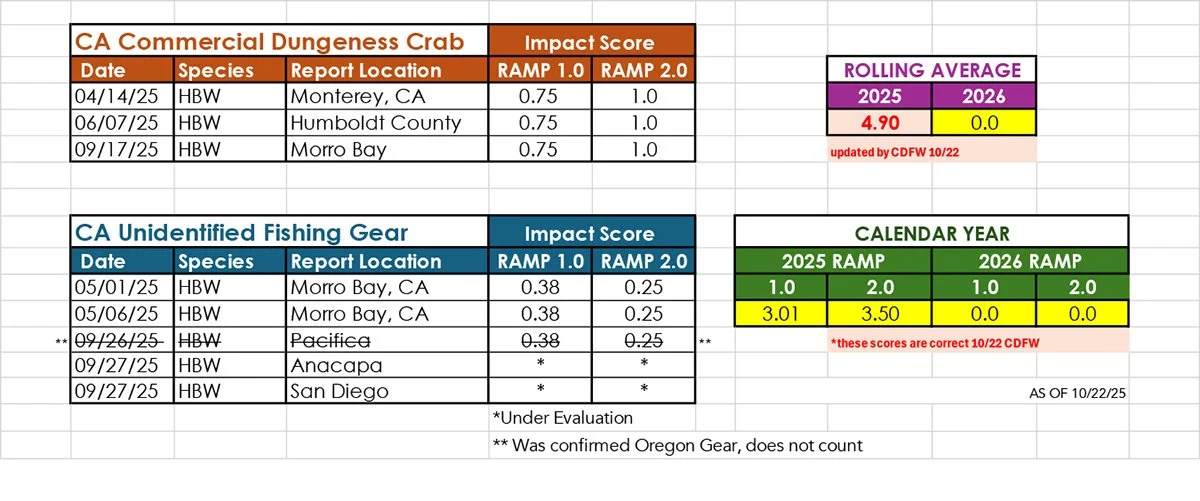
Risk Assessment (RAMP)
Risk Assessments are conducted under the Risk Assessment and Mitigation Program (RAMP) to evaluate whale entanglement risk and determine whether adjustments to the commercial Dungeness crab fishery are necessary. These assessments occur on a scheduled basis using available data sources. The Dungeness Crab Gear Working Group does not make decisions; it provides recommendations for the CDFW Director’s consideration under RAMP. The Director has the authority to delay, modify, or close an area based on these assessments.
The table above shows recent confirmed entanglement reports and their associated impact scores under RAMP. This data was verified by CDFW 10/22/25.
-
LATEST SEASON INFORMATION
The commercial Dungeness crab fishery will be delayed in all Fishing Zones due to numerous reported entanglements this year, high abundance of humpback whales, and presence of leatherback sea turtles. This delay will allow whales and sea turtles to migrate out of California waters prior to the opening of the commercial fishery. This delay was broadly supported by the Dungeness Crab Fishing Gear Working Group and the Pacific Coast Federation of Fisherman’s Association (PCFFA).
“Another year of a delayed commercial Dungeness crab season is incredibly difficult for our fleet and port communities. However, given the current risk assessment process, the commercial fleet supported this outcome as the most practical path forward,” said Lisa Damrosch, PCFFA Executive Director. “We appreciate CDFW and Director Bonham listening to input from the Dungeness Crab Gear Working Group and providing the needed clarity for planning. Although none of this is easy, we thank CDFW for their responsiveness, which reflects the cooperation that will be essential to meeting the challenges ahead for this fishery and our fleet.”
CDFW anticipates the next risk assessment will take place in mid-December to inform a possible opening of the commercial fishery around the New Year.
During the mid-December Risk Assessment, the CDFW Director will evaluate all available data, including a recommendation from the Dungeness Crab Fishing Gear Working Group to determine whether the commercial fishery can open.
-
Line Marking Requirements for 2026
Beginning in the 2025–26 season, all surface (trailer) line must be marked in purple and black. Line may be manufactured with two purple strands and one black strand, or painted in alternating solid purple and black bands (6–12 inches, full circumference) and maintained so the colors remain visible.
The upper 15 fathoms of vertical line will be phased in over several seasons, with full implementation by 2028–29.
Buoy ID rules have not changed. There is no new “D” buoy marking requirement.
-
Electronic Monitoring Required 2026
Description Beginning in the 2025–26 season, all vessels must have an approved EM unit installed and transmitting before fishing. Archipelago is the current approved provider, and the device must have an active subscription that automatically sends location data to CDFW. If you already have a unit, it must be installed and activated. Having the hardware by itself doesn’t meet the requirement. The hydraulic pressure sensor is optional under current guidance. Archipelago FishVue Lime devices have been distributed. Their website is being updated. For questions email whalesafefisheries@wildlife.ca.gov





